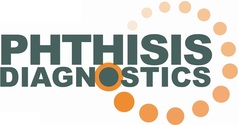
Crowd-sourced Assessment of Surgical Skill
Senior Software Engineer at C-SATS, Inc. We are a venture-backed healthcare technology company on a mission to empower the nation's 16 million healthcare workers and institutions to assess and improve their performance continuously, accurately and objectively.
I am a full stack software engineer designing and creating systems to collect, analyze, and distribute crowd-sourced medical evaluations. I design and maintain embedded hardware that records and uploads surgical video from ORs around the country.
In addition, I direct our distributed panel of video reviewers, working in recruitment, management, and quality assurance.
Senior Software Engineer at C-SATS, Inc. We are a venture-backed healthcare technology company on a mission to empower the nation's 16 million healthcare workers and institutions to assess and improve their performance continuously, accurately and objectively.
I am a full stack software engineer designing and creating systems to collect, analyze, and distribute crowd-sourced medical evaluations. I design and maintain embedded hardware that records and uploads surgical video from ORs around the country.
In addition, I direct our distributed panel of video reviewers, working in recruitment, management, and quality assurance.
Machine-learned Quantification of Surgical Skill

Software manager overseeing four unique platforms and leading Simulab’s software development team. Responsible for end-to-end development of new software and electrical hardgoods/circuitry used in the SmarTissueTM system.
Software developer for the EDGE laparoscopic training system. Working in a small team, responsible for all code pertaining to EDGE data collection, real-time monitoring and analysis, system maintenance, and statistical modeling. Continuing research started in the University of Washington’s Biorobotocs lab to quantify and evaluate surgical skill using machine-learning algorithms such as Hidden Markov Modeling. All system features implemented in the Python environment. Amazon AWS computing and storage services widely utilized.
Software developer for the EDGE laparoscopic training system. Working in a small team, responsible for all code pertaining to EDGE data collection, real-time monitoring and analysis, system maintenance, and statistical modeling. Continuing research started in the University of Washington’s Biorobotocs lab to quantify and evaluate surgical skill using machine-learning algorithms such as Hidden Markov Modeling. All system features implemented in the Python environment. Amazon AWS computing and storage services widely utilized.
Bioimpedance Analysis of Limb Volume Change in Amputees

As a graduate researcher in Joan Sanders' lab at the University of Washington, I have developed bioimpedance analysis as a tool to measure and improve prosthetic fit in lower-limb amputees. Bioimpedance functions by injecting a small current into tissue over a range of frequencies. Electrical impedance, or resistance to flow, is measured by a series of sensing electrodes. Using iterative curve-fitting algorithms in MATLAB, we are able to estimate limb fluid volume inside the prosthesis using this sensed impedance. For my Master's Thesis, I employed bioimpedance analysis to assess the utility of pressure release to optimize socket fit. In the process, I developed an extensive study protocol, carried out human subject testing, performed all post-processing and data analysis, and have written and submitted a journal article manuscript. Taking a research project from initial idea to submitted manuscript has taught me the necessary focus, attention to detail, and resilience needed to take a project to its completion.
At the University of Washington, I further honed my computational and signal processing skills through bioimpedance analysis and classwork. I became skilled with finite element modeling (FEM), developing a simulated amputated limb in COMSOL to test electrical bioimpedance hypotheses. Through writing theses, manuscripts, and conference presentations I also became highly skilled in the Adobe Image software, namely Photoshop, Illustrator, and Premier Pro. In addition to software, the Sanders lab allowed me to gain experience in regulatory and human subjects requirements.
At the University of Washington, I further honed my computational and signal processing skills through bioimpedance analysis and classwork. I became skilled with finite element modeling (FEM), developing a simulated amputated limb in COMSOL to test electrical bioimpedance hypotheses. Through writing theses, manuscripts, and conference presentations I also became highly skilled in the Adobe Image software, namely Photoshop, Illustrator, and Premier Pro. In addition to software, the Sanders lab allowed me to gain experience in regulatory and human subjects requirements.
Bioinformatics and Molecular Diagnostics

In 2009, I applied and was selected as the summer intern at Phthisis Diagnostics. Phthisis specializes in molecular diagnostic tools for intestinal parasites. As an intern, I developed two computational products for Phthisis. There are hundreds of identified genetic sequences for each strain of Cryptosporidium and Giardia, two of the most commonly diagnosed intestinal parasites. However, genetic mutations within each strain present problems for scientists who need to use a genetic sequence as a positive control in their molecular assays. To solve this problem, I developed a suite of Perl algorithms to recursively generate DNA Sequence Standards for each parasite strain. The algorithms considered the occurrence of each base pair for hundreds of available sequences and rated them based on their genetic entropy. The generated standards are currently for sale and received a US patent.
Using the Sequence Standards produced, I was able to generate a set of optimized molecular probes that would bind to a wide variety of mutated genetic strains. I used molecular binding mechanics software to validate the probe designs in silico, and confirmed their accuracy in the lab using quantitative PCR, giving me a hands-on skill set in wet lab molecular science.
Phthisis provided me with a unique view into the daily operations of a small biotech start-up company, and allowed me to participate in integral company functions like fundraising meetings, product design plans, and customer interview panels. I received education and exposure to product due diligence and current good manufacturing practices which are a core necessity for any emerging biotechnology.
Using the Sequence Standards produced, I was able to generate a set of optimized molecular probes that would bind to a wide variety of mutated genetic strains. I used molecular binding mechanics software to validate the probe designs in silico, and confirmed their accuracy in the lab using quantitative PCR, giving me a hands-on skill set in wet lab molecular science.
Phthisis provided me with a unique view into the daily operations of a small biotech start-up company, and allowed me to participate in integral company functions like fundraising meetings, product design plans, and customer interview panels. I received education and exposure to product due diligence and current good manufacturing practices which are a core necessity for any emerging biotechnology.
Infantile Apnea Prediction

For my Senior thesis project, I developed a real-time computational algorithm to identify and predict apnea in premature infants. Researching with Dr. Randall Moorman, we identified the prevalence of apnea as a significant threat to the health of premature infants and a major contributor to excess medical costs. Using a variety of computational tools, we attempted to identify patterns in collected vital sign data that might predict an upcoming apneic event. I employed MATLAB signal processing to characterize the overall population of premature infants and highlight abnormal vital sign data that correlated with clinically confirmed episodes of apnea. The resulting statistical predictors have formed the basis of a real-time bedside monitor to predict apnea, currently being developed at UVA.
The opportunity to apply computational skills to a highly relevant clinical problem is what helped cement my fascination with medical device technology. I became an adept programmer and logical thinker through this work, and was exposed to difficulties and pitfalls between biomedical research and a functional medical product. I learned the power of using computational tools to make a relevant, effective statement given a wealth of otherwise useless data.
The opportunity to apply computational skills to a highly relevant clinical problem is what helped cement my fascination with medical device technology. I became an adept programmer and logical thinker through this work, and was exposed to difficulties and pitfalls between biomedical research and a functional medical product. I learned the power of using computational tools to make a relevant, effective statement given a wealth of otherwise useless data.
